Introduction to Self-Testing for Autism in Adults
Tests For Autism For Adults | Navigating the complexities of adult life can be challenging, and for those who may be on the autism spectrum, these challenges can be even more pronounced. Understanding whether you or someone you know might be on the autism spectrum can be a crucial step in finding the right support and resources. While a definitive diagnosis requires a professional evaluation, self-testing tools can provide valuable insights and help guide your next steps.
In this blog, we’ll explore some commonly used self-testing tools for autism in adults. We’ll delve into their purpose, what they assess, and how they can be used as a starting point for seeking a formal diagnosis. By understanding these tools and their potential benefits, you can take an informed step towards understanding yourself better and accessing the support you need.
Self-screening tools for Autism Spectrum Disorder (ASD) are questionnaires that you can complete on your own. While these tools are widely available online for free, they are not designed to provide a definitive autism diagnosis. Instead, they can help determine whether you should seek a professional evaluation.hese tools are not meant to diagnose autism but can offer a preliminary indication of whether further evaluation might be beneficial.
In this article, we will explore some of the most commonly used self-screening tools for autism in adults, including the Autism Spectrum Quotient (AQ-10), the Adult Repetitive Behaviours Questionnaire-2 (RBQ-2A), and the Adult Social Behavior Questionnaire (ASBQ) andothers. We will discuss how these tools work, their strengths and limitations, and how they can be used effectively. Additionally, we will provide guidance on what to do if you suspect you may be on the autism spectrum and how to seek a formal diagnosis.
Why Self-Screening Tools Are Important for Adults
Many adults with autism go undiagnosed because the condition was less understood or recognized when they were children. As awareness of autism has grown, more adults are recognizing traits in themselves that align with the autism spectrum. Self-screening tools can help individuals:
- Gain Insight: Understand whether their experiences and behaviors may be related to autism.
- Seek Validation: Feel validated in their struggles and strengths, which may have been misunderstood or dismissed in the past.
- Guide Next Steps: Determine whether to pursue a formal diagnosis or seek support from a mental health professional.
While self-screening tools are not diagnostic, they can provide a useful starting point for adults exploring the possibility of autism.
Commonly Used Self-Screening Tools for Autism in Adults
1. Autism Spectrum Quotient (AQ-10)
What Is the AQ-10?
The Autism Spectrum Quotient (AQ-10) is a brief, 10-question screening tool derived from the longer Autism Spectrum Quotient (AQ), which was developed by Simon Baron-Cohen and colleagues. The AQ-10 is designed to assess traits associated with autism in adults, such as social difficulties, communication challenges, and restricted interests.
How It Works:
- The AQ-10 consists of 10 statements related to autism traits.
- Respondents rate how strongly they agree or disagree with each statement on a scale.
- A higher score indicates a greater likelihood of autism traits.
Strengths:
- Quick and Easy: The AQ-10 is short and can be completed in just a few minutes.
- Accessible: It is widely available online and can be used as a preliminary screening tool.
Limitations:
- Limited Scope: The AQ-10 is a brief tool and may not capture the full range of autism traits.
- Reliability Concerns: Some studies suggest that the AQ-10 may not be the most reliable indicator of autism, particularly for individuals with subtle or high-functioning traits.
Example Questions:
- “I prefer to do things the same way over and over again.”
- “I find it hard to make new friends.”
What to Do Next:
If your AQ-10 score suggests the presence of autism traits, consider taking the full Autism Spectrum Quotient (AQ) or seeking a formal evaluation from a mental health professional.
Download it here
2. Adult Repetitive Behaviours Questionnaire-2 (RBQ-2A)
What Is the RBQ-2A?
The Adult Repetitive Behaviours Questionnaire-2 (RBQ-2A) is a 20-item questionnaire designed to assess restricted and repetitive behaviors (RRBs), which are a core feature of autism. RRBs include intense focus on specific interests, repetitive movements, and rigid adherence to routines.
How It Works:
- The RBQ-2A consists of 20 statements about repetitive behaviors and interests.
- Respondents rate how often they engage in each behavior on a scale.
- A higher score indicates a greater likelihood of autism-related repetitive behaviors.
Strengths:
- Focus on RRBs: The RBQ-2A specifically targets repetitive behaviors, which are a key aspect of autism.
- Effective Screening Tool: It is considered highly effective for identifying autism traits in adults.
Limitations:
- Narrow Focus: The RBQ-2A focuses primarily on repetitive behaviors and does not assess other aspects of autism, such as social communication difficulties.
Example Questions:
- “I like to collect and organize things.”
- “I get upset if my daily routine is disrupted.”
What to Do Next:
If your RBQ-2A score suggests the presence of repetitive behaviors, consider using additional screening tools to assess other aspects of autism, such as social communication, or seek a formal evaluation.
RBQ-2A can be viewed here
3. Adult Social Behavior Questionnaire (ASBQ)
What Is the ASBQ?
The Adult Social Behavior Questionnaire (ASBQ) is a 44-item questionnaire designed to assess a broad range of autism-related traits in adults. It covers areas such as social interaction, communication, and flexibility in thinking and behavior.
How It Works:
- The ASBQ consists of 44 statements related to autism traits.
- Respondents rate how strongly they agree or disagree with each statement on a scale.
- A higher score indicates a greater likelihood of autism traits.
Strengths:
- Comprehensive: The ASBQ covers a wide range of autism-related traits, making it a useful tool for identifying autism in adults with varying levels of support needs.
- Versatile: It can be used for self-assessment or for evaluating others.
Limitations:
- Length: The ASBQ is longer than other screening tools, which may make it less accessible for some individuals.
Example Questions:
- “I find it hard to understand what other people are thinking or feeling.”
- “I prefer to stick to a routine and get anxious if it changes.”
What to Do Next:
If your ASBQ score suggests the presence of autism traits, consider seeking a formal evaluation from a mental health professional.
Download ASBQ PDF Here
In addition to the AQ-10, RBQ-2A, and ASBQ, there are several other self-screening tools that adults may find helpful:
4. Ritvo Autism Asperger Diagnostic Scale-Revised (RAADS-R)
What Is the RAADS-R?
The Ritvo Autism Asperger Diagnostic Scale-Revised (RAADS-R) is an 80-question self-report tool designed to assess autism traits in adults. Developed by Dr. Riva Ariella Ritvo and colleagues, the RAADS-R evaluates four key areas associated with autism:
- Social Interaction: Difficulties in understanding and navigating social situations.
- Language: Challenges with verbal and non-verbal communication.
- Sensory-Motor: Sensory sensitivities and motor coordination issues.
- Circumscribed Interests: Intense focus on specific topics or activities.
The RAADS-R is particularly useful for identifying autism in adults who may have gone undiagnosed in childhood.
How It Works:
- The RAADS-R consists of 80 statements related to autism traits.
- Respondents indicate how often each statement has applied to them throughout their lives, using a scale that ranges from “True now and when I was young” to “Never true.”
- Scores are calculated for each of the four domains, as well as an overall total score.
- A higher score indicates a greater likelihood of autism traits.
Strengths:
- Comprehensive: The RAADS-R covers a wide range of autism-related traits, making it a thorough screening tool.
- Lifetime Perspective: It assesses behaviors and experiences both in the present and during childhood, which is important for identifying autism in adults.
- Clinically Validated: The RAADS-R has been widely used in clinical and research settings and is considered a reliable tool for identifying autism in adults.
Limitations:
- Length: The RAADS-R is longer than some other screening tools, which may make it less accessible for some individuals.
- Complex Scoring: The scoring system can be complex, and interpretation may require professional guidance.
Example Questions:
- Social Interaction: “I find it hard to make and keep friends.”
- Language: “I often misunderstand what others are trying to say to me.”
- Sensory-Motor: “I am bothered by loud noises or bright lights.”
- Circumscribed Interests: “I have a strong interest in a specific topic that I spend a lot of time learning about.”
What to Do Next:
If your RAADS-R score suggests the presence of autism traits, consider seeking a formal evaluation from a mental health professional.
Access the RAADS-D Here or Here
5. Camouflaging Autistic Traits Questionnaire (CAT-Q)
What Is the CAT-Q?
The Camouflaging Autistic Traits Questionnaire (CAT-Q) is a 25-item self-report tool designed to assess camouflaging behaviors—strategies used by individuals to mask or compensate for autism traits in social situations. Camouflaging is common among individuals with autism, particularly women and those with high support needs, and can lead to delayed diagnosis and increased mental health challenges.
How It Works:
- The CAT-Q consists of 25 statements related to camouflaging behaviors.
- Respondents rate how strongly they agree or disagree with each statement on a scale.
- Scores are calculated for three subscales: Compensation, Masking, and Assimilation.
- A higher score indicates a greater use of camouflaging strategies.
Strengths:
- Focus on Camouflaging: The CAT-Q is one of the few tools specifically designed to assess camouflaging behaviors, making it particularly useful for individuals who may not exhibit obvious autism traits.
- Insight into Coping Strategies: It provides valuable insights into how individuals adapt to social situations, which can inform support and intervention strategies.
Limitations:
- Narrow Focus: The CAT-Q focuses specifically on camouflaging and does not assess other aspects of autism.
- Self-Report Bias: As with all self-report tools, responses may be influenced by the individual’s self-awareness and willingness to disclose.
Example Questions:
- Compensation: “I have developed strategies to hide my social difficulties.”
- Masking: “I pretend to be ‘normal’ to fit in with others.”
- Assimilation: “I try to act like the people around me so that I don’t stand out.”
What to Do Next:
If your CAT-Q score suggests that you use camouflaging strategies, consider exploring how these behaviors may be impacting your mental health and well-being. Seeking support from a therapist or autism specialist can help you develop healthier coping mechanisms and reduce the need to camouflage.
Access the CAT-Q test here
6. Empathy Quotient (EQ)
What Is the EQ?
The Empathy Quotient (EQ) is a 60-item self-report tool designed to measure empathy, which is often reduced in individuals with autism. Developed by Simon Baron-Cohen and colleagues, the EQ assesses both cognitive empathy (the ability to understand others’ perspectives) and affective empathy (the ability to share and respond to others’ emotions).
How It Works:
- The EQ consists of 60 statements related to empathy.
- Respondents rate how strongly they agree or disagree with each statement on a scale.
- A higher score indicates a greater level of empathy.
- Individuals with autism typically score lower on the EQ compared to neurotypical individuals.
Strengths:
- Comprehensive: The EQ provides a detailed assessment of empathy, which is a key aspect of social interaction.
- Clinically Validated: The EQ has been widely used in research and clinical settings and is considered a reliable tool for assessing empathy.
Limitations:
- Narrow Focus: The EQ focuses specifically on empathy and does not assess other aspects of autism.
- Cultural Bias: Some items on the EQ may be influenced by cultural norms and expectations.
Example Questions:
- Cognitive Empathy: “I find it easy to put myself in someone else’s shoes.”
- Affective Empathy: “I often feel sad when I see someone else crying.”
What to Do Next:
If your EQ score suggests difficulties with empathy, consider exploring how this may be impacting your social interactions and relationships. Seeking support from a therapist or autism specialist can help you develop strategies to improve your social skills and understanding of others.
Access the EQ Here
What to Do If You Suspect You May Be on the Autism Spectrum
If your results from a self-screening tool suggest that you may be on the autism spectrum, here are some steps you can take:
- Educate Yourself:
- Learn more about autism and how it presents in adults. Books, online resources, and support groups can provide valuable information.
- Seek a Formal Evaluation:
- Contact a mental health professional, such as a psychologist or psychiatrist, who specializes in autism. They can conduct a comprehensive assessment to determine whether you meet the criteria for an autism diagnosis.
- Join a Support Group:
- Connecting with other adults on the autism spectrum can provide validation, support, and practical advice.
- Explore Accommodations and Support:
- If you receive a diagnosis, consider seeking accommodations at work or school, as well as therapy or coaching to help you navigate challenges.
Self-screening tools for autism in adults, such as the AQ-10, RBQ-2A, and ASBQ, can provide valuable insights into whether you may be on the autism spectrum. While these tools are not diagnostic, they can help you understand your experiences and guide you toward seeking a formal evaluation. If you suspect you may be on the autism spectrum, remember that you are not alone, and there are resources and support available to help you thrive. Taking the first step toward understanding yourself better is a powerful and empowering act.
Self-testing tools for autism can be an invaluable first step in understanding whether you or someone you know might be on the autism spectrum. While these tools are not a substitute for a professional diagnosis, they can provide meaningful insights and help you identify whether it’s worth pursuing a formal evaluation.
By completing these self-screening questionnaires, you gain a clearer picture of traits and behaviors that are commonly associated with autism. This awareness can help you better understand your own experiences or those of a loved one, and guide you toward seeking appropriate support and resources.
Remember, a formal diagnosis by a qualified professional is essential for a comprehensive understanding and to access tailored support and interventions. If self-testing reveals patterns that resonate with your experiences, consider reaching out to a healthcare provider or autism specialist. They can offer a thorough assessment and help you navigate the next steps, ensuring you receive the support and understanding you need. Taking this proactive approach can lead to a better quality of life and enhanced well-being.



